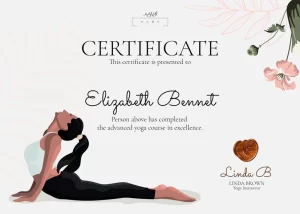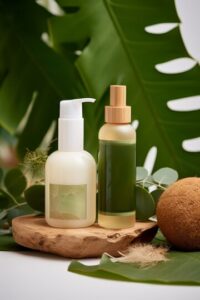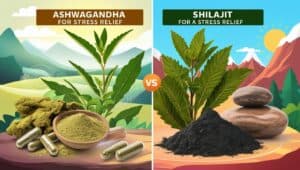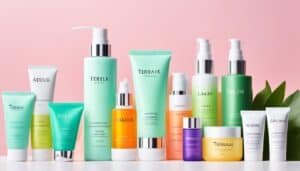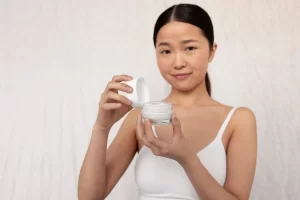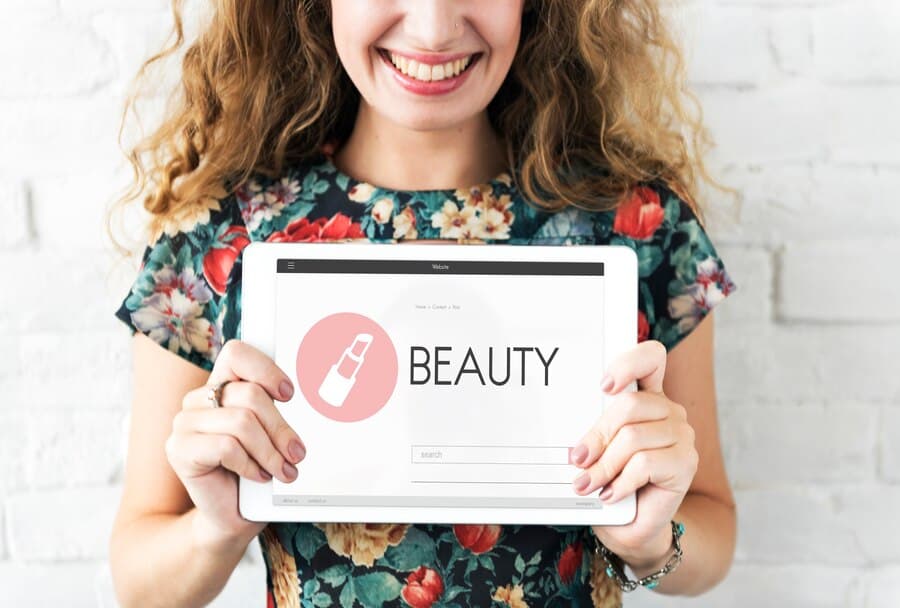
Navigating Beauty Standards in Modern Society
In today’s society, beauty standards play a significant role in shaping our perception of ourselves and others.
The ideals of beauty, influenced by cultural expectations, can have a profound impact on body image and self-esteem.
Understanding and navigating these standards is crucial for maintaining a positive relationship with our own beauty and fostering a more inclusive society.
Key Takeaways:
- Beauty standards in modern society are influenced by cultural expectations.
- These standards have a significant effect on body image and self-esteem.
- Navigating beauty standards is important for maintaining a positive relationship with our own beauty.
- A more inclusive and diverse approach to beauty standards is necessary for a healthier society.
- Understanding the impact of beauty ideals can help promote body positivity and self-acceptance.
The Evolution of Beauty Standards
Beauty standards have undergone a significant transformation throughout history, influenced by societal perceptions, media portrayals, and the perpetuation of stereotypes.
This section delves into the evolution of beauty standards, shedding light on the impact of media, the understanding of beauty, and the prevailing ideals that have shaped our perception of attractiveness.
“Beauty is in the eye of the beholder.” – Anonymous
Beauty standards in media: From glossy magazines to social media platforms, the media has played a pivotal role in defining and disseminating beauty ideals.
Photoshopped images, airbrushed models, and digitally altered representations have created a distorted view of beauty, often presenting unattainable standards that impact individuals’ self-esteem and body image.
Beauty perception: Societal perceptions of beauty have transformed over time, reflecting changes in cultural values and norms.
What was considered beautiful in one era may not have been celebrated in another.
Physical features, body types, and even skin color have been subject to shifting preferences, influenced by diverse influences such as art, culture, and historical events.
Beauty stereotypes: Stereotypes associated with beauty have also played a significant role in shaping beauty standards.
Societal expectations of femininity and masculinity, as well as racial and cultural biases, have perpetuated narrow definitions of beauty.
These stereotypes have excluded many diverse individuals from feeling represented or accepted within traditional beauty ideals.
Classic beauty standards: Examining classic beauty standards from different eras provides insights into the evolving perceptions of beauty.
For example, the hourglass figure popularized in the mid-20th century, the pale complexion symbolizing wealth in the Victorian era, or the emphasis on natural beauty during the Renaissance.
These historical beauty ideals provide context to understand the dynamic nature of beauty standards.
Media Influence on Beauty Standards:
The media’s portrayal of beauty has a profound impact on how society perceives and internalizes beauty standards.
Images of flawless models and celebrities permeate various media sources, contributing to unrealistic beauty ideals.
The constant exposure to these idealized representations can negatively affect individuals’ self-esteem and create a sense of inadequacy.
Media Influence |
Effects on Beauty Perception |
|---|---|
| Magazines | Promote unattainable beauty standards and airbrushed images |
| Television | Showcase a limited range of idealized beauty and reinforce stereotypes |
| Social Media | Facilitate comparison and reinforce the pursuit of perfection |
As beauty standards continue to evolve, it is essential to question, challenge, and redefine the criteria by which we judge beauty.
By recognizing the influence of media, the subjective nature of beauty perception, and the harm caused by stereotypes, we can work towards fostering a more inclusive and empowering environment that celebrates diverse forms of beauty.
The Current State of Beauty Standards
As we step into 2022, it’s crucial to examine the prevailing beauty standards in today’s society.
These standards play a significant role in shaping our perceptions of beauty and influencing our self-esteem.
From body ideals to grooming trends, beauty standards continue to evolve, reflecting the ever-changing landscape of cultural expectations.
Beauty standards in 2021 acted as a precursor for the shifts we are seeing in 2022.
With an increased emphasis on individuality and inclusivity, beauty standards are becoming more diverse and representative of various body types, skin tones, and ethnicities.
In this era, the concept of beauty is expanding beyond conventional norms, celebrating uniqueness and authenticity.
American beauty standards in 2022 are influenced by a mix of cultural trends, social media impact, and the desire for acceptance in a highly interconnected world.
This year, we are witnessing a rise in body positivity movements, encouraging individuals to embrace their natural beauty and challenge unrealistic beauty expectations.
Trends in fashion, makeup, and hair are also shaping beauty standards in today’s society.
For example, the popularity of minimalistic and natural-looking makeup has gained traction as a reflection of the increasing interest in clean beauty and self-care.
Similarly, body acceptance movements are encouraging individuals to focus on overall well-being rather than pursuing unattainable physical perfection.
Notable Beauty Trends in 2022:
- Inclusive representation of diverse identities and body types
- Emphasis on self-love, body positivity, and mental well-being
- Increasing popularity of clean beauty and sustainable practices
- Acceptance and celebration of natural hair textures and styles
- Rise of gender-neutral beauty and blurring traditional beauty boundaries
“2022 is a transformative year for beauty standards. We are witnessing a shift towards inclusivity, embracing individuality, and redefining the concept of beauty. It’s a time to celebrate diversity and challenge the traditional beauty ideals that have often excluded marginalized groups.” –Beauty expert, Dr. Maya Johnson
While progress is being made, it’s important to recognize that beauty standards can still have a significant impact on individuals’ mental health and self-esteem.
The pressure to meet societal expectations can lead to body image issues, low self-confidence, and even the development of mental health disorders.
Therefore, it is crucial to continue advocating for more inclusive and realistic beauty standards that promote self-acceptance and well-being.
As we navigate the ever-changing beauty landscape, it is essential to remember that beauty is subjective and personal.
We each have the power to redefine beauty standards and embrace our own unique qualities.
By challenging narrow beauty ideals and promoting diversity, we can create a more inclusive and empowering society where everyone feels valued and beautiful, regardless of societal expectations.
Cultural Variations in Beauty Standards
Beauty standards vary significantly across different cultures around the world.
From Brazilian beauty standards to Nordic beauty standards and Wonyoung Korean beauty standards, women’s ideals of beauty often reflect the unique cultural influences and societal expectations of their respective regions.
Brazilian Beauty Standards
Brazilian beauty standards are renowned for celebrating curves and embracing diverse body types.
In Brazil, a country known for its vibrant carnival culture and sizzling beaches, voluptuous figures are highly regarded.
Brazilian women are often admired for their toned, shapely bodies and embrace a sense of confidence in their appearance.
Nordic Beauty Standards
In contrast to the curvaceous ideal in Brazil, Nordic beauty standards tend to favor a more slender and minimalistic aesthetic.
The concept of “less is more” is often seen in Nordic countries, emphasizing natural beauty, simplicity, and a focus on skincare.
This approach values a fresh-faced look with minimal makeup and a clean, healthy complexion.
Wonyoung Korean Beauty Standards
Korean beauty standards, particularly popularized by K-pop and K-drama cultures, have gained global attention in recent years.
Wonyoung, a member of the popular Korean girl group IZ*ONE, has become an influential figure in shaping Korean beauty standards.
Korean beauty emphasizes porcelain-like skin, large doe-like eyes, a narrow V-shaped face, and a petite physique.
Skincare is paramount, and a well-defined makeup routine is valued to achieve a youthful and radiant appearance.
These examples highlight just a few snapshots of beauty standards around the world.
It’s important to note that beauty comes in various forms, and societal pressures to conform to specific ideals can impact women’s self-esteem and body image.
“Beauty is diversity. The world is a colorful mosaic of unique individuals, each possessing their own interpretation of beauty. Embracing these differences allows us to celebrate the beauty within ourselves and others.”
With this understanding in mind, let’s explore the impact of beauty standards on mental health in the next section.
The Impact of Beauty Standards on Mental Health
Unrealistic beauty standards for women have a profound impact on mental health, affecting self-esteem and contributing to a range of mental health issues.
The relentless pursuit of an unattainable ideal can have devastating consequences, leading to a cycle of self-doubt, comparison, and dissatisfaction.
Beauty standards not only shape societal perceptions but also influence how individuals perceive themselves.
The constant bombardment of flawless images in media platforms sets an impossible standard that few can meet, causing feelings of inadequacy and a negative body image.
This can lead to a distorted perception of one’s own appearance, resulting in low self-esteem and poor mental well-being.
The pressure to conform to beauty standards is immense. Women are made to believe that their worth is defined by their looks, perpetuating the idea that they must fit into narrow molds of attractiveness.
This can be incredibly detrimental to mental health, as it fosters insecurity, self-criticism, and a sense of never being good enough.
Research has shown a strong link between beauty standards and eating disorders.
The pressure to achieve a certain body type and weight can lead to unhealthy and dangerous behaviors.
Moreover, beauty standards can significantly impact depression levels in individuals.
The constant comparison to airbrushed and digitally altered images can foster a sense of worthlessness and despair.
The pressure to conform to unrealistic ideals can exacerbate feelings of sadness and hopelessness, contributing to the development or worsening of depression.
Effects of Beauty Standards on Mental Health:
- Diminished self-esteem
- Distorted body image
- Insecurity and self-criticism
- Eating disorders
- Depression
The damaging effects of beauty standards on mental health cannot be ignored.
It is crucial to challenge these standards and promote a more inclusive and accepting narrative.
By embracing diverse representations of beauty and recognizing the value of inner qualities, we can create a society that prioritizes mental well-being over unrealistic ideals.
The Harmful Effects of Societal Beauty Standards
Societal beauty standards are harmful in numerous ways, perpetuating unrealistic ideals and causing detrimental effects on individuals’ mental health and well-being.
These toxic standards of beauty often prioritize a narrow definition of attractiveness, leading to feelings of inadequacy and low self-esteem among those who do not conform.
“Beauty standards are often rooted in social constructs and can be highly exclusive, excluding individuals who do not fit the prescribed mold.”
Such exclusivity creates a harmful cycle, as individuals strive to attain an unattainable ideal, often resorting to extreme measures or feeling a constant dissatisfaction with their appearance.
This preoccupation with conforming to beauty standards can drive individuals into unhealthy behaviors, such as disordered eating or excessive exercise.
The pressure to meet these standards can also contribute to the development of mental health disorders like depression and anxiety.
Moreover, beauty standards can be particularly harmful to marginalized groups who are underrepresented or distorted in mainstream media.
This lack of representation reinforces harmful stereotypes and cultivates a society that values and celebrates only a limited range of beauty.
By questioning the existence of beauty standards altogether, we can initiate a critical examination of their impact. Should beauty standards even be a yardstick against which individuals are measured?
The Need for More Inclusivity
It is crucial to challenge the toxicity of beauty standards and advocate for a more inclusive definition of beauty.
The concept of beauty should embrace diversity and celebrate the uniqueness of every individual, irrespective of their age, race, body type, or any other characteristic.
Increasing representation and promoting diversity in media, advertising, and popular culture is essential in dismantling the harmful effects of societal beauty standards.
By normalizing a broader range of appearances and promoting positive body image, we can foster a healthier and more accepting society.
Empowering Individuals to Redefine Beauty
Empowering individuals to define beauty on their terms is another key aspect of challenging beauty standards.
By encouraging self-acceptance and self-love, we can help individuals embrace their natural beauty and recognize that their worth extends far beyond their physical appearance.
Education and awareness are vital in shifting societal perspectives and dismantling harmful beauty norms.
By fostering conversations around body positivity and self-acceptance, we can create a culture that respects and celebrates diverse forms of beauty.
Impact of Societal Beauty Standards |
How Can Beauty Standards Be Harmful? |
|---|---|
| 1. Negative body image and low self-esteem | 1. Reinforce unattainable ideals |
| 2. Disordered eating and unhealthy exercise habits | 2. Contribute to mental health disorders |
| 3. Exclusion of marginalized groups | 3. Reinforce harmful stereotypes |
| 4. Limited representation and lack of diversity | 4. Foster dissatisfaction and insecurities |
By acknowledging the harmful effects of societal beauty standards, we can strive for a world that values and celebrates the inherent beauty in every individual, fostering inclusivity and promoting positive self-image.
The History and Origins of Beauty Standards
Beauty standards have a long and ever-evolving history, shaping the way societies perceive and value physical appearance. They have been present in civilizations for centuries, but their timeline and origins can vary.
In general, the concept of beauty standards can be traced back to ancient civilizations such as Ancient Egypt, Mesopotamia, and Ancient Greece.
These societies held certain physical attributes, such as symmetry, clear skin, and proportionate features, in high regard.
However, beauty standards went through significant transformations over time, especially in America.
The United States has been greatly influenced by cultural shifts, media representation, and societal changes that shaped the perception of beauty.
During the early 20th century, beauty standards were heavily influenced by classic Hollywood icons, such as Marilyn Monroe and Audrey Hepburn.
The hourglass figure, emphasized femininity, and flawless complexion were highly admired.
Over the years, beauty standards continued to change, influenced by various factors, including social movements, globalization, and the rise of digital media.
These changes brought greater diversity and inclusion to the beauty industry, challenging traditional ideals and embracing different body types, ethnicities, and identities.
Today, beauty standards have become more fluid and broad, recognizing that beauty exists in all shapes, sizes, and colors.
However, societal pressures and unrealistic beauty ideals still persist, impacting individuals’ self-esteem and mental health.
Overall, the history and origins of beauty standards reflect the ever-changing nature of our perceptions and the complex interplay between culture, media, and societal values.
Challenging Beauty Standards and Promoting Body Positivity
Beauty standards have long been a subject of scrutiny and debate. The pressure to conform to unrealistic ideals has not only taken a toll on individual self-esteem but has also contributed to the perpetuation of harmful stereotypes and exclusionary practices.
However, there is hope for change. By challenging beauty standards and promoting body positivity, we can create a society that embraces diversity and celebrates all forms of beauty.
So, how can we change beauty standards? It starts with shifting the narrative and challenging the status quo. Here are some strategies and initiatives that individuals and society can undertake:
1. Embrace and Celebrate Diversity
Beauty comes in all shapes, sizes, colors, and abilities. It is crucial to recognize and celebrate the diversity that exists within our society.
By embracing different body types, ethnicities, ages, and abilities, we can move away from the narrow confines of traditional beauty standards and foster a more inclusive and accepting culture.
2. Redefine Beauty from Within
Beauty is not solely about external appearance. It is about confidence, kindness, strength, and character.
By emphasizing inner qualities and shifting the focus from physical attributes, we can redefine beauty in a way that recognizes and values the entirety of a person.
3. Challenge Media Representation
The media plays a powerful role in shaping beauty ideals. It is crucial to challenge the narrow representation of beauty that often dominates mainstream media.
By promoting diverse models, showcasing a range of body types, and avoiding excessive editing and retouching, we can create more realistic and inclusive beauty standards.
4. Educate and Empower
Educating ourselves and others about the harmful effects of beauty standards is essential.
By raising awareness about the negative impact of unrealistic ideals on mental health and self-esteem, we can empower individuals to break free from the confines of beauty standards and embrace their unique beauty.
5. Support Body Positive Brands and Initiatives
There is a growing movement of body positive brands and initiatives that aim to challenge beauty standards and promote inclusivity.
By supporting these brands and engaging with body positive initiatives, we can contribute to a positive change in the industry and inspire others to do the same.
Remember, beauty standards can be stopped. By challenging the existing norms and advocating for a more inclusive and positive approach to beauty, we can create a society where everyone feels valued and accepted, regardless of their appearance.
Benefits of Challenging Beauty Standards |
Ways to Promote Body Positivity |
|---|---|
| 1. Increased self-esteem and body confidence | 1. Spread awareness through social media campaigns |
| 2. Reduced pressure to conform to unrealistic ideals | 2. Engage in body positive discussions and events |
| 3. Foster a more accepting and inclusive society | 3. Advocate for diversity in advertisements and media |
| 4. Encourage self-love and self-acceptance | 4. Support and promote body positive role models |
By implementing these strategies and supporting body positivity, we can challenge beauty standards and create a more inclusive and accepting society.
Let’s celebrate the beauty that exists in diversity and embrace a new era of beauty standards that value authenticity and self-acceptance.
Conclusion:
Navigating Beauty Standards in Modern Society
In conclusion, the impact of beauty standards on individuals in modern society is undeniable.
Throughout this article, we have explored the evolution of beauty standards, the current state of beauty ideals, cultural variations in these standards, and the harmful effects they can have on mental health.
It is clear that unrealistic beauty standards can lead to negative body image, low self-esteem, and even mental health disorders.
The toxic nature of these standards calls for a shift towards a more inclusive and healthy approach.
Challenging beauty standards and promoting body positivity are crucial steps towards creating a society where everyone feels comfortable and confident in their own skin.
By embracing diversity and redefining beauty ideals, we can create a culture that celebrates uniqueness and empowers individuals to embrace their true selves.
Navigating beauty standards in today’s world requires awareness and conscious effort.
Let us remember that beauty is subjective and should not be limited to narrow societal expectations.
By embracing individuality and promoting inclusivity, we can pave the way for a more accepting society where everyone’s beauty is celebrated.
FAQ
Are beauty standards a social construct?
Yes, beauty standards are socially constructed ideals of physical appearance that vary across different societies and cultures.
How do beauty standards affect mental health?
Beauty standards can have a negative impact on mental health, leading to low self-esteem, body image issues, and even the development of eating disorders or depression.
Do beauty standards change over time?
Yes, beauty standards evolve over time due to shifts in cultural values, societal trends, and the influence of media on the perception of beauty.
What are the current beauty standards in 2022?
The current beauty standards in 2022 are influenced by various factors, including body positivity movements, diversity and inclusivity, and the promotion of natural beauty.
How can beauty standards be harmful?
Beauty standards can be harmful by perpetuating unrealistic ideals of beauty, promoting comparison and self-criticism, and contributing to poor body image and self-esteem.
How can we change beauty standards?
Changing beauty standards requires promoting diversity, challenging stereotypes, embracing body positivity, and advocating for inclusive representations of beauty in media and society.
When did beauty standards start?
Beauty standards have existed for centuries, with different ideals of beauty emerging in ancient civilizations and evolving over time with cultural and societal influences.
Should beauty standards be more inclusive?
Yes, beauty standards should be more inclusive to celebrate diversity and empower individuals regardless of their race, body type, or appearance.
Related posts that you may like: Essential Skin Care Tips For Black Skin
